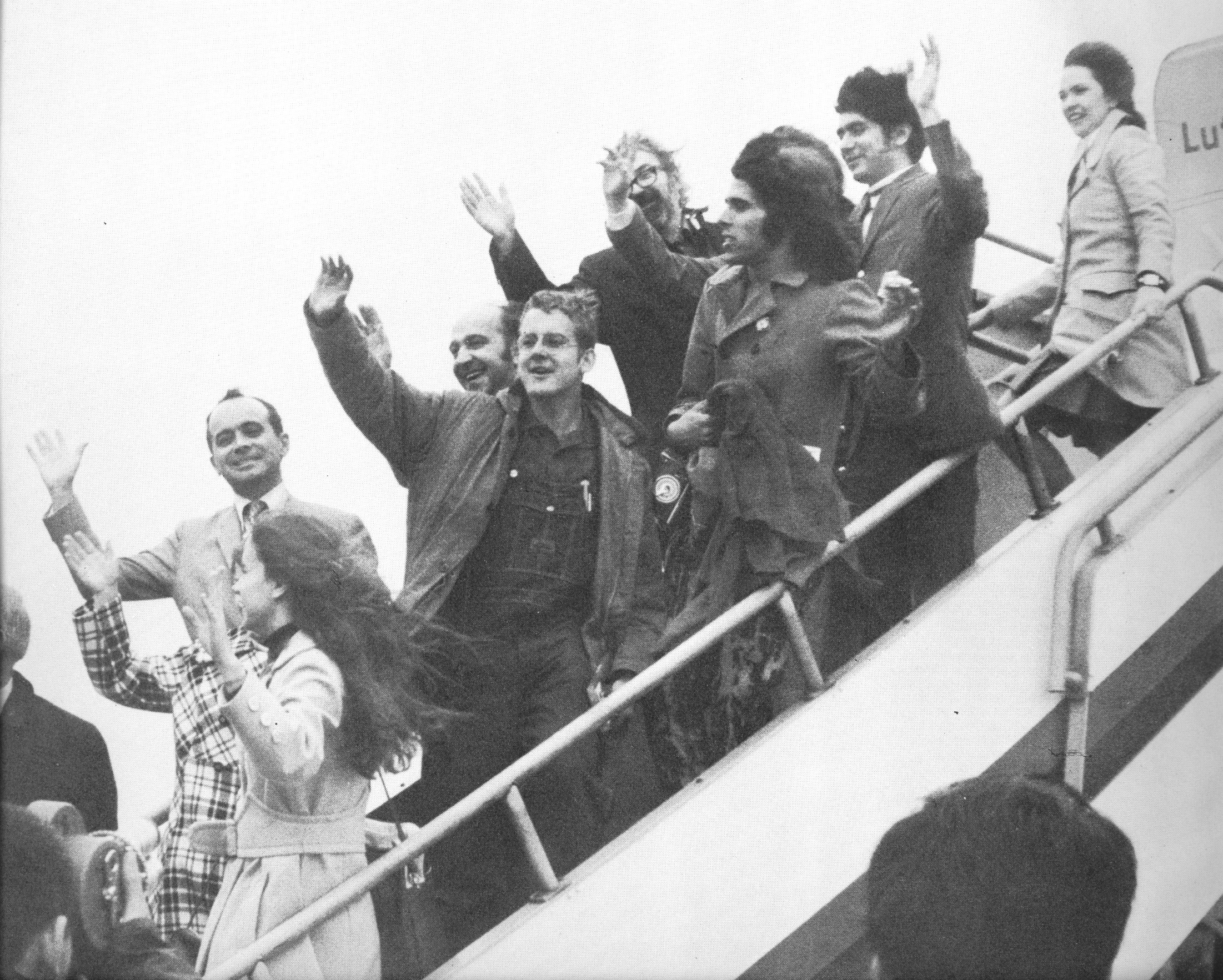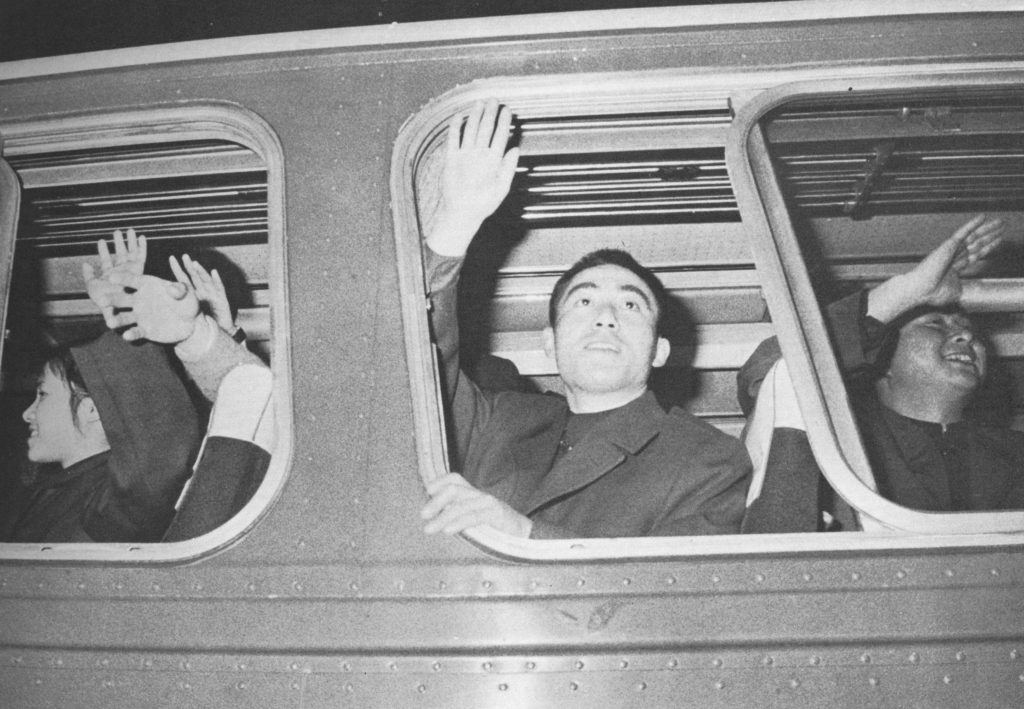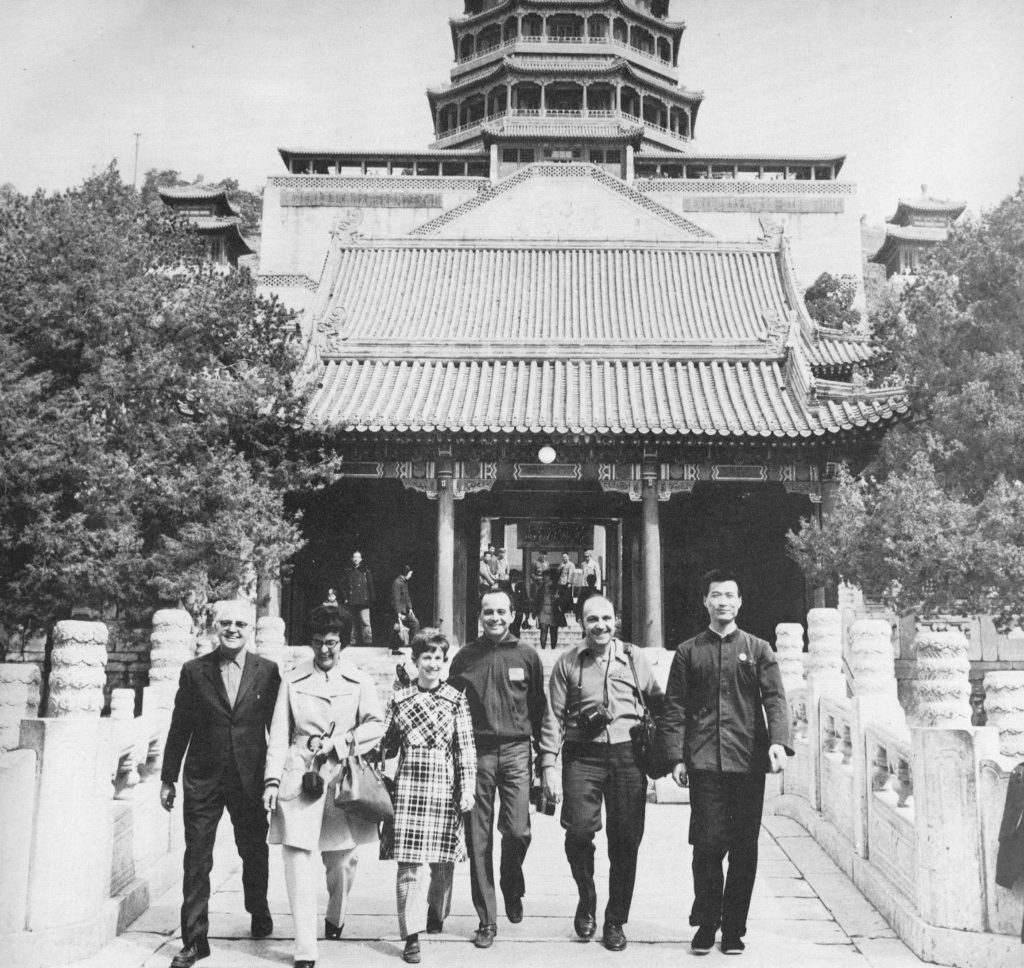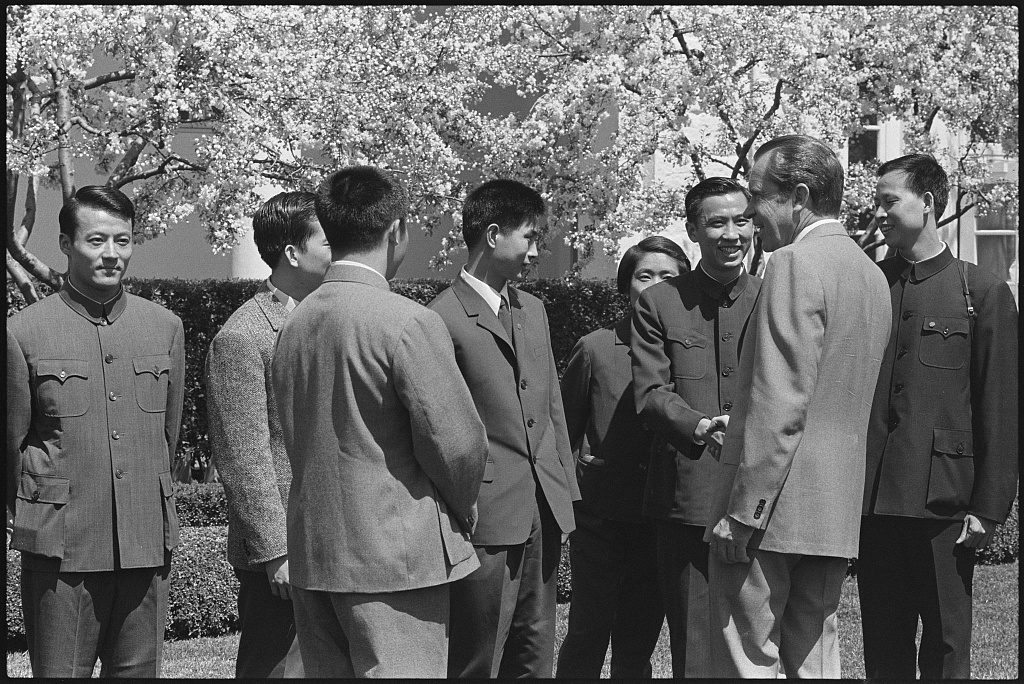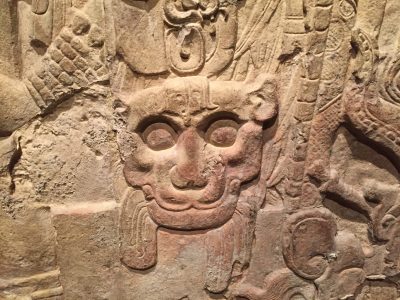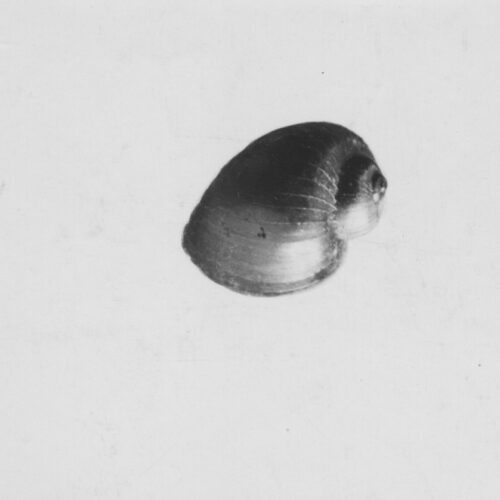When a friendly interchange unexpectedly emerged between American and Chinese table tennis players in 1971, the National Committee on U.S. – China Relations seized the opportunity to support a reciprocal invitation. Created in 1966 with hopes of improving relations between the two nations, the privately-funded, nonprofit National Committee on U.S. – China Relations was well situated to sponsor the exchange. “Ping Pong diplomacy” serves as an example of cultural diplomacy also underscores the unique role that Third Sector organizations can play in international affairs.
A Challenging Context for American Philanthropy
In the opening years of the twentieth century, independent not-for-profit organizations, from philanthropic foundations to missionary societies to social service organizations, were eager to work in China. But direct activities were hampered first by the Japanese invasion of China, and then by the 1949 victory of Mao Zedong’s Chinese Communist Party in China’s civil war. The subsequent establishment of the People’s Republic of China (PRC) made Western activities in China impossible. The US suspended diplomatic ties with the PRC, and Mao forced Western organizations to leave the country.
Formation of the National Committee on U.S.-China Relations
Western philanthropic interest in China did not wane –but activities had to be conducted outside China itself. John D. Rockefeller 3rd (JDR 3rd), for one, in the post-war years set up his namesake fund — later the Asian Cultural Council — to support cultural interests in Asia, broadly construed. Through support to higher education institutions, the Henry Luce and Ford Foundations helped build the field of China studies in the United States.
Then, a series of academic conferences in the 1960s began to foster foreign policy debates within American elite circles. Following from these discussions, China and East-Asian specialists including A. Doak Barnett, Robert Scalapino, and Lucian Pye formed the National Committee on U.S.-China Relations to encourage inter-cultural understanding and open up new venues for diplomatic exchange.
Philanthropy Funds U.S.-China Relations
But the loosely organized group did not have a clear future. It lacked an institutional home and, more importantly, funding. In 1966, John D. Rockefeller 3rd stepped in to become the first financial backer of the National Committee. This was a logical step, given his longstanding interest in Asia and diplomacy (JDR 3rd founded the Asia Society, reinvigorated the Japan Society, and was a member of the 1951 Dulles Peace Mission to Japan).John Ensor Harr and Peter J. Johnson, The Rockefeller Conscience. An American Family in Public and in Private (Macmillan, 1991) 447.
Following his example, the Rockefeller Brothers Fund and the Ford Foundation made grants as well. In 1967, Ford provided $675,000 to the Committee.“National Committee on United States-China Relations, Inc.,” Grant #06700183, Ford Foundation Grants, Rockefeller Archive Center.
With a more stable financial base to work from and owing to its status as a non-governmental, not-for-profit organization, the National Committee began to develop a program to encourage the citizens of the US and China to take interest in each other. Most of the early activities were academic conferences and research projects. Just a few years into this work, however, a major opportunity for a more prominent kind of soft diplomacy emerged practically overnight.
An Unexpected Invitation from China
In the spring of 1971, table tennis teams from around the world traveled to Japan to compete in the World Table Tennis Championship. Seemingly unprompted, the American player Glenn Cowan boarded the Chinese players’ shuttle bus, and Zhuang Zedona, the Chinese team’s star, approached him and shook his hand. This spontaneous friendly gesture prompted Chinese Premier Chou En-lai to invite the US Table Tennis team to visit his country. The Americans accepted, and mere days later they set out for China.For a fuller treatment of this story, see Nicholas Griffin, Ping Pong Diplomacy (Skyhorse Publishing, 2014).
Ping Pong Diplomacy
The visit was the first interchange on a person-to-person level in decades. The New York Times, in its coverage of the visit, speculated, “if American table tennis players are welcome in Peking, then it would seem likely that other categories of United States citizens may soon be admitted.”“Ping Pong Diplomacy” The New York Times (April 10, 1971).
National Committee leadership seized the opportunity to extend this unusual moment of direct connection. Executive Director B. Preston Schoyer cabled the American table tennis team in Hong Kong, en route to China. His telegram instructed:
Understand you [sic] considering reciprocal invitation to Chinese sports group [Stop] If necessary and appropriate National Committee on U.S. – China Relations expects it could raise funds to support Chinese team US visit if invitation is accepted [Stop].“Cable to American Table Tennis Team, Hong Kong (April 8, 1971),”National Committee on U.S. – China Relations records, RG 4, Series 9: Ping Pong Diplomacy, Rockefeller Archive Center.
Cable to the American Table Tennis Team, 1971
Schoyer hoped that his organization’s support would reinforce a reciprocal invitation and help foster a longer-standing exchange. Indeed, the American team invited the Chinese table tennis team to visit the US the following spring.
The American trip to China gave new momentum to President Richard Nixon‘s goal of restoring US diplomatic relations with the PRC. In July 1971, on the heels of the first table tennis exchange, Nixon announced that he would make an official visit to China. That historic visit took place in February 1972, making Nixon the first US President to visit China while in office.
Encouraging Sports Diplomacy
Meanwhile, the US Table Tennis Association and the National Committee were preparing for the Chinese delegation’s visit to the United States. The organizations formed a joint committee to plan every detail. The gravity of the occasion was evident to all, and a degree of nervousness prevailed, as reflected in the records from the planning process:
It is vital that [the visit] be well executed, in a manner and style representing the best of the American spirit and appropriate to a non-governmental people-to-people exchange.“The First Visit of Citizen of the People’s Republic of China to the United States. Instruction and Guide.” (February 25, 1972). National Committee on U.S. – China Relations records, RG 4, Series 9, Rockefeller Archive Center.
In fact, the visit went well and the press gave it favorable coverage. It was first and foremost a people-to-people exchange. The Chinese delegation met with and played against table tennis players in several cities, with civic groups in each locale greeting them. The planning committee ensured the tour was set up in such a way that the Chinese could see many cultural attractions and freely inquire about any detail of American life.
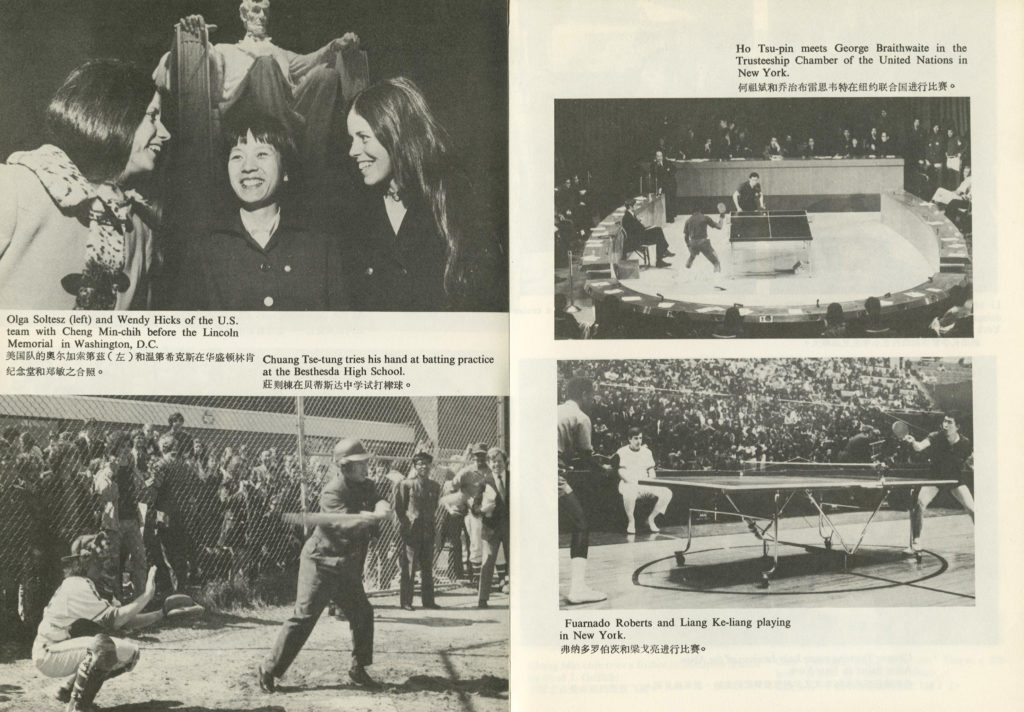
When the Chinese delegation arrived back home, they cabled a thank-you note to the United States Table Tennis Association, saying:
Sincere thanks to warm reception given by your people. Friendly personnel [sic] from all walks of life during their visit in your country.“Telegram (June 5, 1972),” National Committee on U.S. – China Relations records, RG 4, Series 9: Ping Pong Diplomacy, Rockfeller Archive Center.
Telegram from the Chinese Table Tennis Delegation to the American Table Tennis Association

Ping Pong Diplomacy Worth the Cost
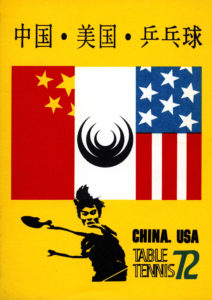
Despite pre-visit nerves, the only snafus had been a few small groups of protesters and a deficit in revenue from table tennis competition ticket sales. Income for events over the course of the visit amounted to $162,000, but when all was said and done, costs totaled $236,000. This prompted a series of terse and unpleasant communications — hardly diplomatic, one might say — between the US Table Tennis Association and the National Committee.
But the historic significance of the exchange and the optimism fostered by in-person, citizen-to-citizen communication remained the prevailing sentiment at the end of the day. The episode underscored the unique role that independent organizations can play in in international affairs, by fostering soft diplomacy and cultural activities.
In a letter to Tim Boggan, Table Tennis Association president and one of the American player-participants, National Committee chairperson Schoyer summed up:
The National Committee lost its shirt but acquired new opportunities in the area of cultural and education exchanges with China.“B. Preston Schoyer to Tim Boggan (December 5, 1972),” National Committee on U.S. – China Relations records, RG 4, Series 9, Rockefeller Archive Center.
Throughout the 1970s, relations gradually warmed between the two nations, and formal diplomatic relations were normalized on January 1, 1979, under the Carter administration.
Watch: Chinese Table Tennis Delegation Visits the United States
Further Reading
- Pete Millwood, “People-to-People Contacts between China and the United States in the 1970s: Report on Materials at the Rockefeller Archive Center.” Rockefeller Archive Center Research Reports, 2021.
- Jiayi Tao, “Envisioning the Future of the Rockefeller Foundation in Wartime and Post-War China, 1943-1946.” Rockefeller Archive Center Research Reports, 2020.
- Yishi Liu, “A Progressivist Program in China: Planning and Building Peking Union Medical College.” Rockefeller Archive Center Research Reports, 2020.
Related

The Rockefeller and Ford Foundations Navigate Civil War in Nigeria
What happened to a massive agricultural development program when war broke out?
